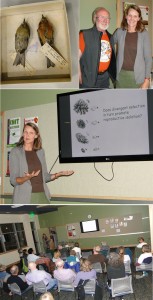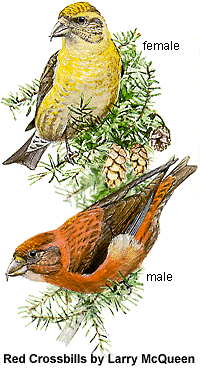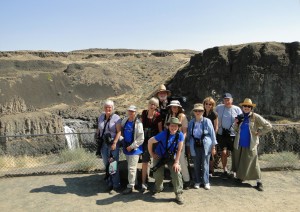VAUX SWIFT FALL MIGRATION SUMMARY, as seen by Diane Yorgason-Quinn and Adam Trent
JBLM SWIFT CHIMNEY: We had a good local team of counters this fall. I made several personal visits starting August 26 and finishing September 21, most with excellent weather, but our last few counters are now experiencing that changeable fall weather, and counts are falling as expected. We had an informal field trip there on September 14th, only open to those with base access and their friends/relatives, but there were 15 of us! See forthcoming write-up in The Towhee. It was a nice warm evening with lots of swifts.
SELLECK CHIMNEY: After the disappointing no-show of the swifts last year, we held the field trip earlier this year on August 31, and we were not disappointed, with about 700 birds seen on a wonderful late summer evening.
MONROE SWIFT FESTIVAL: Adam and I attended the festival on Sept 13th, where we bumped into Susan Boyington and about a thousand other swifters! The turnout was fabulous, the most I’ve ever seen! The swifts pleased the crowd, most of them not knowing that 2600 swifts was far from a big night for Monroe. Applause ensued.
SEDRO-WOOLLEY: The Old Northwest Hospital field trip, hosted by Skagit Audubon, was on September 18th. Adam and I made our annual trek up there. When we met the group it was raining, and hopes were low. However, as we drove up the palatial driveway of the facility, now a Job Corps center, there were swifts pouring into the chimney in the rain. When we parked, the rain started to let up, and then the swifts put on their show! Several thousand, unknown total due to the stream of birds who had already entered. A nice crowd from Skagit Audubon also was nice, although we always wonder why there is no one out there watching from the Job Corps. Maybe they watch on other nights. Thanks, Tim Manns, for arranging this great field trip!
EUGENE, OREGON: On September 22nd, Adam and I found the UofO campus and the chimney at Agate Hall. School wouldn’t start for another week, so parking wasn’t bad. The lot at Agate Hall is enforced for those with parking passes only until 6 PM, so swifters get in free after that. We had first found it around 4:10 PM, and swifts were already going in the chimney in light sprinkles of rain. We came back at 5:45 and found swifts still, or again, entering the chimney. This continued sporadically until we saw a Merlin zoom by, but it never came back, probably because of constant crow and Cooper’s Hawk attention to the chimney after that. Although a crow did land on the chimney, it later became clear that it was mainly trying to keep the Coop from doing so. The Coop then managed 2 nice meals from sacrificial swifts before departing well after dark. Meanwhile, a Chimney Swift was detected by those more savvy than I, although Adam did hear its different vocalization! Then thousands upon thousands of swifts lined up in circles in the sky to get into bed, not finishing until about 6:40 in rainy very dark conditions. Check out a video we made and a few other shots at: 76552838@N03/sets/72157647623276170/” >https://www.flickr.com/photos/76552838@N03/sets/72157647623276170/ The video was made in the dark, but you can still see the frenzy. This was the high count for us personally this season with over 10,000 birds in spite of the drizzle, and lots of drama!
ST. JOHNS THEATER/PORTLAND AREA: On the evening of September 23rd, we checked out what has become a good roost in this area, but met heavy rain starting at sunset (after the heavy traffic getting there!). We saw about 30 swifts, but only one went into the chimney, and he ended up coming back out to find out where his friends went. I hope they made it to Chapman or some other safe site in that rain! They have had hundreds of swifts there, but this wasn’t the best night for this interesting chimney!



